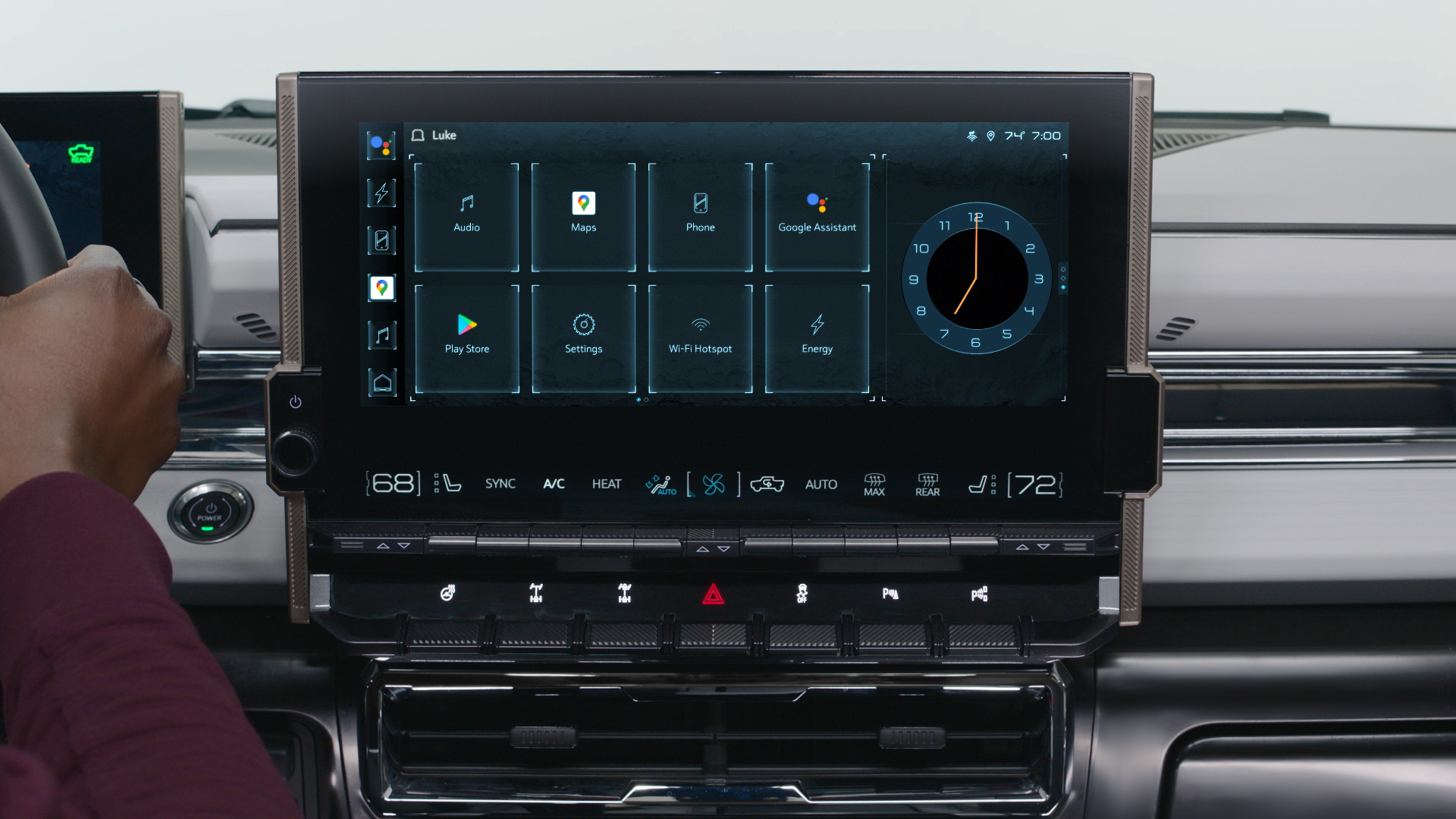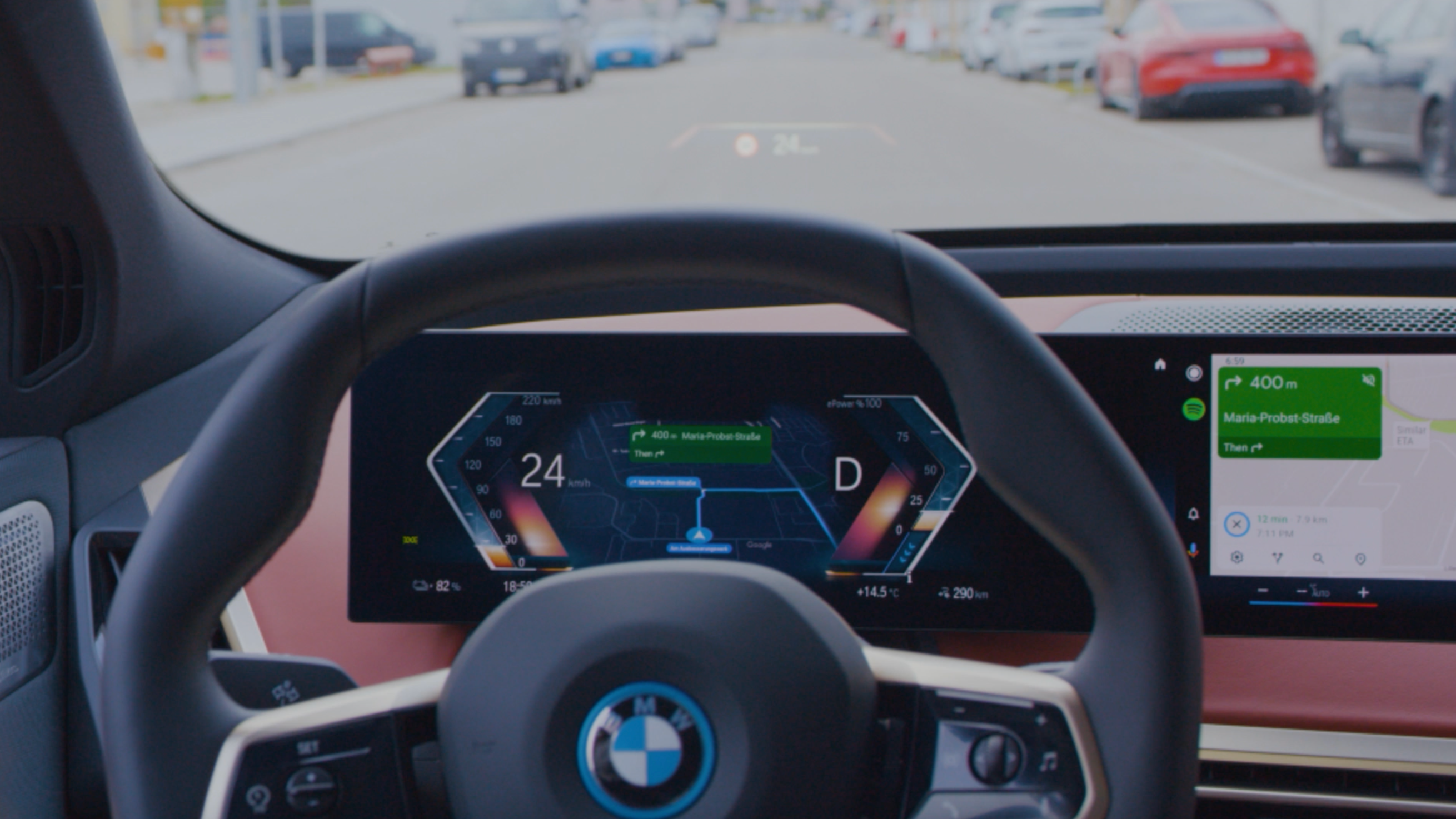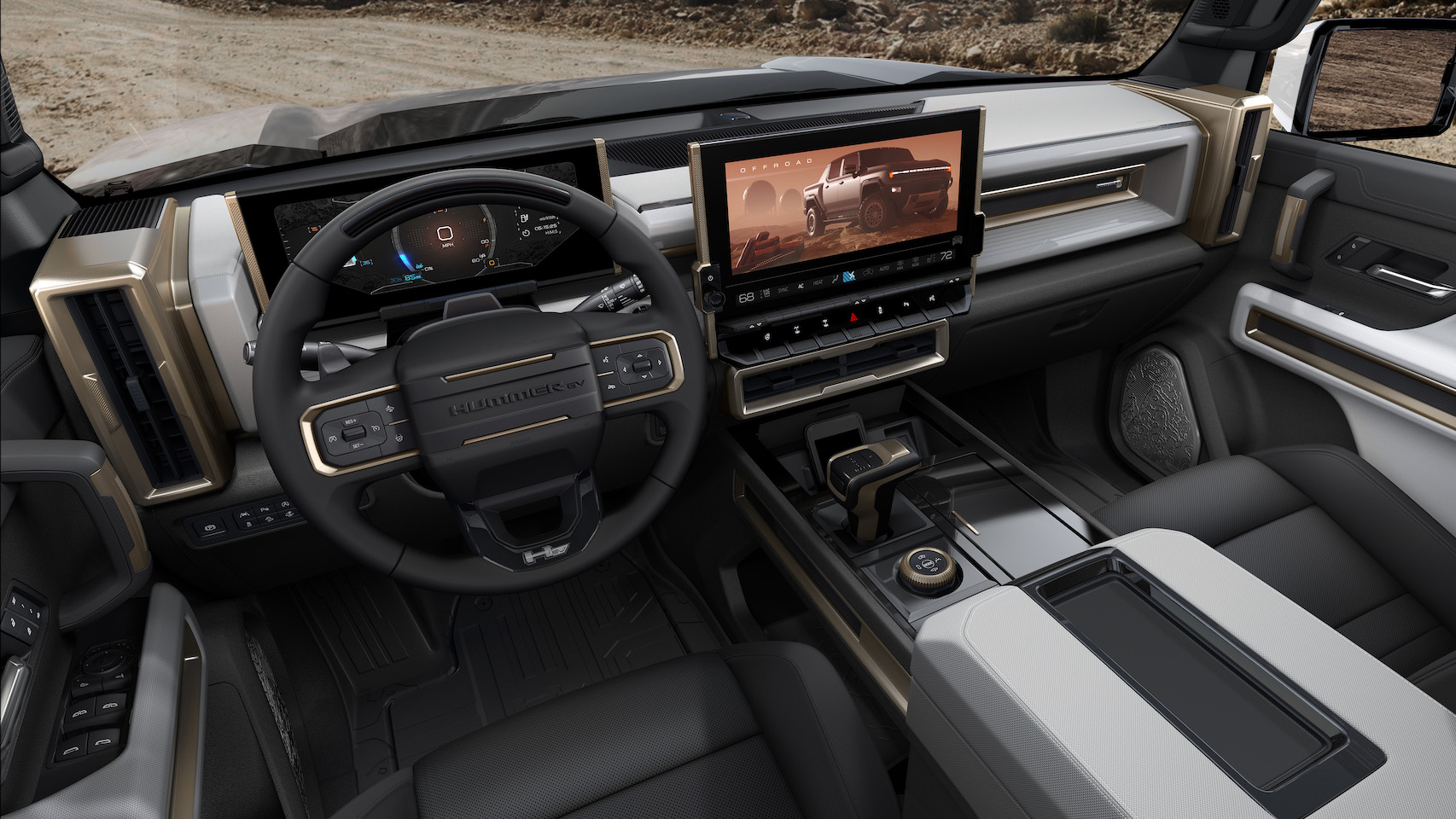
Google has announced a slew of new in-car navigation and entertainment features coming as part of the company’s continued push to integrate Android into vehicles.
At Google IO 2021, the tech giant’s annual developer conference, Android for Cars director Mickey Kataria debuted the new ways drivers can expect to see Android OS augment their in-car experience – including the full integration of Google Maps into instrument clusters and Android-powered infotainment systems.
To demonstrate the new tech, the company wheeled out the all-new BMW iX and GMC Hummer EV – which, as it happens, has a monster central display.
- Even Lamborghini is working on an electric supercar – but you’ll have to wait
- All-electric BMW iX has the range to worry Audi
- Yes, the fully-electric Hummer SUV can also walk like a crab
The new Android Automotive OS lets you control media, navigation and messaging using only your voice, essentially bringing built-in ‘Hey Google’ functionality to compatible vehicles. You can ask the virtual assistant to highlight charging stations on your route, play specific songs or download apps from the Google Play Store, to name just a few new functions.
Compatible vehicles currently available to customers include the Polestar 2, Volvo XC40 Recharge and Volvo XC60, with at least 10 more models from Volvo, General Motors (GM) and Renault expected to benefit from Android Automotive OS by the end of 2021.
In the BMW iX, Google demonstrated the new features coming to Android Auto – which, incidentally, will also begin shipping with compatible Porsche models from 2022 – with the most notable being the ability to project Google Maps onto the car’s dynamic cluster display.

It doesn’t matter if the driver switches up the visual layout of that display, either – Google Maps will now adapt to suit the HUD system available in a given vehicle.
Get daily insight, inspiration and deals in your inbox
Sign up for breaking news, reviews, opinion, top tech deals, and more.
Both software packages have also been designed to allow developers to build apps that are compatible for both Android Auto and Android Automotive OS, too. By extending the Android for Cars app library, Google is working with the likes of Parkwhiz, Plugshare, Sygic, Chargepoint, Flitsmeister, Spothero and others to integrate their apps into vehicle systems.
Essentially, that means a simple ‘Hey Google’ may soon be capable of revealing local parking spaces, tariffs, charging costs and more inside cars powered Android Automotive OS, as well as those already using the smartphone-enabled Android Auto software.
Go big or go home
As much as Google’s focus lay in its demonstration of Android’s in-car integration throughout the company’s developer presentation, we were just as preoccupied with seeing the GMC Hummer EV’s massive infotainment display in action.


Both the SUV and Pickup variants of the car will pack with the same 13.4-inch touchscreen display as part of their respective center consoles – as well as a 12.3-inch digital instrument panel in front of the driver – and it almost resembles a small smart TV in its size and number of available functions.
As well as room for a digital clock face, we spotted buttons for audio, maps, mobile, wi-fi, energy, air conditioning, heated seats and, of course, Google Assistant – all from the convenience of the home screen.
Add that to its 17 different assistive cameras, underside sensors and ability to walk like a crab, and the Hummer EV is one decked out electric vehicle.
Unfortunately, GM says reservations for the car are already full, but Google’s latest announcement suggests plenty more Android-powered motors are on the way very soon.
- Kia EV6 interior rivals the likes of Audi and Mercedes

Axel is TechRadar's UK-based Phones Editor, reporting on everything from the latest Apple developments to newest AI breakthroughs as part of the site's Mobile Computing vertical. Having previously written for publications including Esquire and FourFourTwo, Axel is well-versed in the applications of technology beyond the desktop, and his coverage extends from general reporting and analysis to in-depth interviews and opinion. Axel studied for a degree in English Literature at the University of Warwick before joining TechRadar in 2020, where he then earned an NCTJ qualification as part of the company’s inaugural digital training scheme.